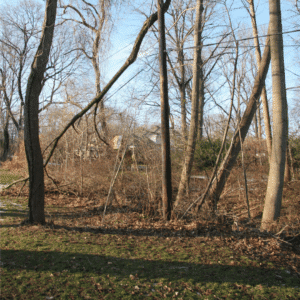Knowing where your property lines lie is crucial for homeowners to avoid boundary disputes with neighbors and make informed decisions about their land. This guide outlines seven effective methods to find your property lines, from reviewing existing surveys to reaching agreements with neighbors.

Understanding Property Lines
Property lines are the legally defined boundaries that delineate the extent of your property. These boundaries can be marked by physical objects like streets, sidewalks, or fences, but in some cases, they may be invisible. Knowing your property lines is vital to avoid legal issues and confidently plan projects on your land.
Methods to Find Your Property Lines:
- Review Your Current Property Survey: Start by checking if there’s an existing property survey of your land, often conducted during the home purchase process. This survey may be included in your home closing paperwork. You can also contact the previous homeowner for a copy if available.
- Use a Property Line or Plat Map: Visit your local county record or assessor’s office to access maps that indicate property lines. Some counties offer this information online, while others may require a visit to their office. Typically, a small fee (usually under $25) is charged for this service.
- Find Your Homeowner’s Deed and Measure Yourself: Your homeowner’s deed contains a physical description of your property, including measurements. Use a tape measure or the physical objects mentioned in the deed to locate your property lines. If your home is still under a mortgage, your lender may hold the deed, and you can request it from them or obtain it from the county recorder’s office.
- Locate a Survey Pin: Survey property pins, often used by contractors during construction, can be found near curbs, sidewalks, or the back of your property. These iron stakes mark property lines and can provide valuable reference points, though they may have been moved by utility companies.
- Visit Your Local Zoning Department: Contact your county’s zoning department to access physical property records, including reference points or measurements for property lines. Similar to other methods, a small fee may apply, and you may be able to order this information online.
- Hire a Licensed Land Surveyor: When other methods fail or if you require precise measurements, consider hiring a licensed land surveyor. They specialize in accurately locating property lines and assessing boundary disputes. Costs range from $200 to $1,000, depending on the complexity of the job. This option is particularly valuable for larger properties.
- Make a Lot Line Agreement with Your Neighbor: In some cases, finding property lines may remain challenging, especially in remote areas. A lot line agreement, or “adjustment agreement,” is a legal arrangement made with your neighbor to agree on property boundaries. This method can resolve disputes without costly legal proceedings and is a viable option when on good terms with your neighbor.

Can a Fence Company Find Your Property Lines?
Most fence companies will not determine property lines for you. It is the homeowner’s responsibility to accurately identify and mark property boundaries. Before hiring a fence company for installation, make sure you have a clear understanding of your property lines through one of the methods mentioned above. This ensures that the fence is correctly placed within your property boundaries.

